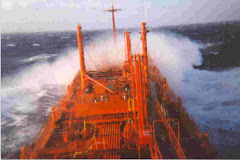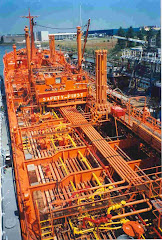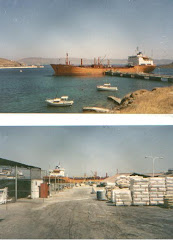Time-charters are helpful in securing cashflow, but they are not an absolute panacea for investors and bankers. Shipping companies retain performance risk. There is normally a hire adjustment annually on actual speed and fuel consumption as a opposed to the notional figures in the charter party agreement. If the vessel is in any way not fit for service, hire payment can be suspended. In bad markets, Charterers have increased bargaining power given the scarcity of employment alternatives for Owners. Charter rates can be negotiated downwards. This is risk for all shipping companies currently as long as this downturn persists, especially in sectors like dry bulk and containers where the underlying freight rates have fallen to very low levels and Charterers may be under financial pressure.
As TradeWinds reported Monday, OceanFreight suspended dividend payments in an effort to preserve capital and to possibly jump on new opportunities. Notably the company reported that its 70,000-dwt August (built 1996) will now fetch a lower rate of $16,000 per day, down from $42,100, on an existing three-year charter.
Given the current low spot rates, many listed shipping companies face the potential risk of renegotated charter rates as the market weakness persists. As an example, TOPS bought a number of bulkers at the top of the market in 2007, which they put on period time charter to cover the premium paid in the prices. EXM entered into a sizeable merger deal in the fall of 2007 at premium price levels with Quintana, who had many units on time-charter. This was heavily financed by bank debt.
Both Natasha Boyden of Cantor, Fitzgerald and Scott Burke of Oppenheimer downgraded OCNF. It was not clear whether they were more influenced by the dividend cut or the charterparty renegotiation.
Time-charters are very different from lease-model employment. Often investment presentations are misleading on this matter. Owners must maintain the units to specified standards, provide crew and supplies and are liable for related agency expenses. If the vessel cannot perform for Charterers, they have the right to suspend charter payment. If vessel performances are overstated, charterers can make claims on the vessel. In case of Charterer insolvency, Owners are obliged to deliver cargo and often to settle the unpaid voyage accounts that are Charterers' debts.
In weak markets, Charterers frequently request hire reductions. Owners are often obliged to accept these reductions for lack of other employment alternatives.
Chartering companies are a margin-based business. They may occur losses if underlying voyage results are lower than their hire obligations, making it difficult for them to carry the vessel. Charterers demand increasing discounts for the length of the charter for the risk and uncertainty of carrying the vessel.
Banks and financiers often make unrealistic and commercially imprudent demands on Owners to employ vessels on long period time charters to cover dividends and loan payments. This may result in poor risk assessment as well as impair Owners' business plans in creating shareholder value.
In any case, employment profile must be carefully assessed for each company on a case by case basis.
As TradeWinds reported Monday, OceanFreight suspended dividend payments in an effort to preserve capital and to possibly jump on new opportunities. Notably the company reported that its 70,000-dwt August (built 1996) will now fetch a lower rate of $16,000 per day, down from $42,100, on an existing three-year charter.
Given the current low spot rates, many listed shipping companies face the potential risk of renegotated charter rates as the market weakness persists. As an example, TOPS bought a number of bulkers at the top of the market in 2007, which they put on period time charter to cover the premium paid in the prices. EXM entered into a sizeable merger deal in the fall of 2007 at premium price levels with Quintana, who had many units on time-charter. This was heavily financed by bank debt.
Both Natasha Boyden of Cantor, Fitzgerald and Scott Burke of Oppenheimer downgraded OCNF. It was not clear whether they were more influenced by the dividend cut or the charterparty renegotiation.
Time-charters are very different from lease-model employment. Often investment presentations are misleading on this matter. Owners must maintain the units to specified standards, provide crew and supplies and are liable for related agency expenses. If the vessel cannot perform for Charterers, they have the right to suspend charter payment. If vessel performances are overstated, charterers can make claims on the vessel. In case of Charterer insolvency, Owners are obliged to deliver cargo and often to settle the unpaid voyage accounts that are Charterers' debts.
In weak markets, Charterers frequently request hire reductions. Owners are often obliged to accept these reductions for lack of other employment alternatives.
Chartering companies are a margin-based business. They may occur losses if underlying voyage results are lower than their hire obligations, making it difficult for them to carry the vessel. Charterers demand increasing discounts for the length of the charter for the risk and uncertainty of carrying the vessel.
Banks and financiers often make unrealistic and commercially imprudent demands on Owners to employ vessels on long period time charters to cover dividends and loan payments. This may result in poor risk assessment as well as impair Owners' business plans in creating shareholder value.
In any case, employment profile must be carefully assessed for each company on a case by case basis.








